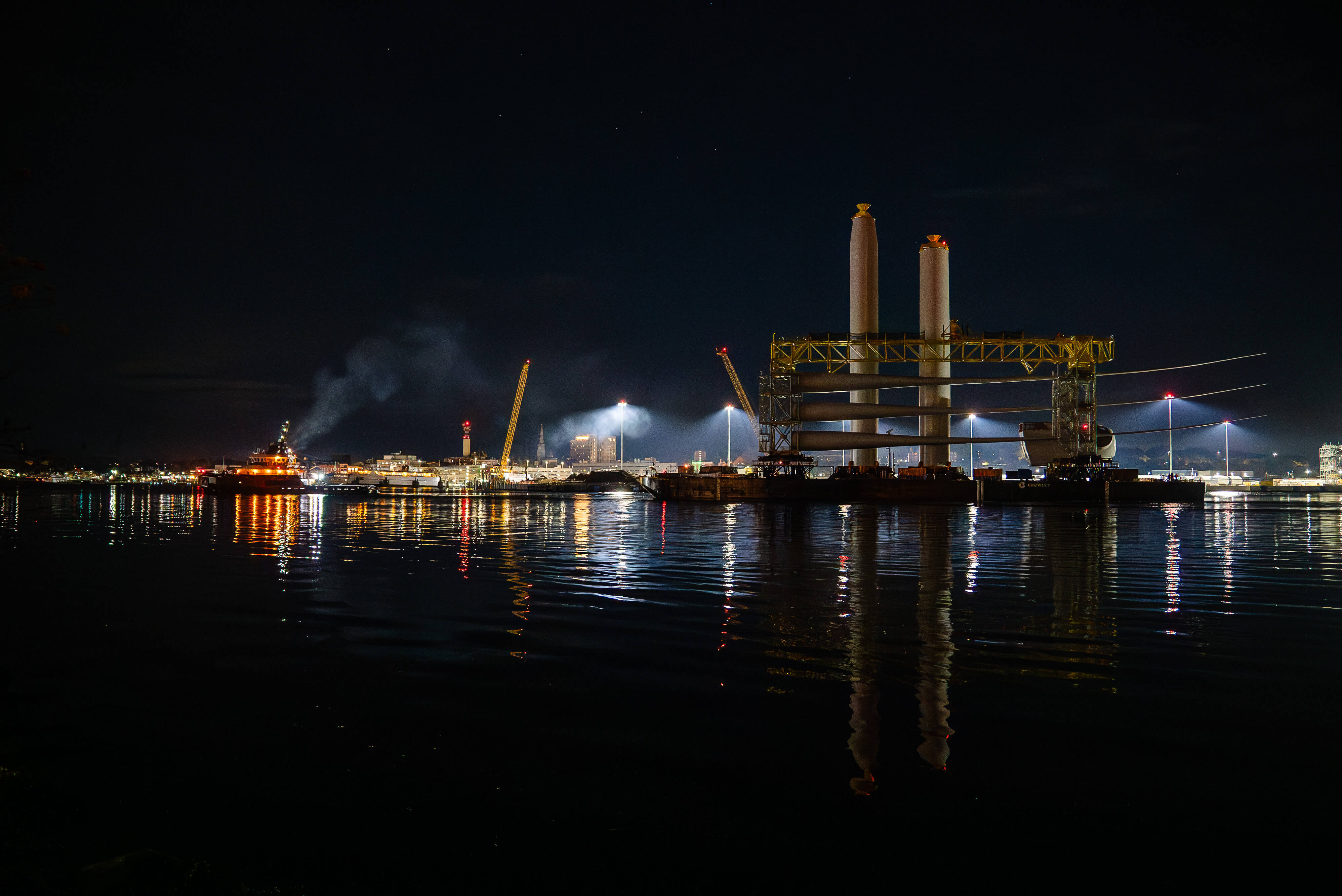Winds of Change: Offshore Wind Farm Developers Face New Challenges Off Montauk

The developers currently building the first offshore wind farm in New York State about 35 miles off the coast of Montauk Point are facing economic and bureaucratic headwinds as the project nears completion.
Ørsted, the Danish wind energy developer building the project known as South Fork Wind in partnership with Eversource, was recently dealt a setback when state regulators denied a request to charge customers more to compensate for rising costs. The viability of Ørsted building a second offshore wind project called Sunrise Wind also planned for 30 miles off the coast of Montauk is “extremely challenged without this adjustment,” a company executive told Reuters last month.
The developments come as the first of a dozen South Fork Wind turbines are being installed in the Atlantic — one of the final phases in the construction.
“We’re probably a little bit too ambitious,” David Hardy, group executive vice president and CEO Americas at Ørsted said at the American Clean Power industry group’s offshore wind conference in Boston last month. “We came in hot, we came in fast, we thought we could build projects that were inexpensive, large projects right out of the gate. And it turns out that we probably still need to go through the same learning curve that Europe did, with higher prices in the beginning and a little slower pace.”
The company also recently wrote off $4 billion, due largely to the recent cancellation of two similar proposals off the coast of New Jersey — Ocean Wind I and II — citing supply chain issues, rising interest rates and not securing enough tax credits. Ørsted’s decision comes after developers in New England canceled power contracts for three projects in Massachusetts and Connecticut that they said were no longer financially feasible.
Off-shore wind farms are a key component of the Biden administration’s goal of establishing a carbon-free electric grid by 2035. The state is aiming for 70% of electricity sourced from renewable energy by 2030 with a zero-emission electric grid by 2040. In addition to reducing the reliance on climate change-inducing fossil fuels, officials also tout the job-creating benefits of the burgeoning offshore wind industry on Long Island and beyond.
In May, there were 27 U.S. offshore wind projects that had negotiated agreements with states to provide power before the brunt of the cost increases hit, according to Walt Musial, offshore wind chief engineer at the National Renewable Energy Laboratory, an arm of the Energy Department. The delay between signing purchase agreements and getting final approval to build allowed unexpected cost increases to render many projects economically unfeasible, he said.

“The bumpiness we’re seeing right now in no way indicates an inability of offshore wind to play a major role in the U.S. electric grid,″ Catherine Bowes, a senior director at Turn Forward, a nonprofit that advocates for offshore wind, told the Associated Press.
“With near daily evidence that the impacts of climate change are here and are getting worse, it is abundantly clear that we need to work aggressively to reduce our contributions of planet-warming greenhouse gas emissions,” said Rob Freudenberg, vice president of energy & environment for the not-for-profit Regional Plan Association. “Implementing offshore wind is one critical pathway to not only move away from polluting fossil fuels that accelerate climate impacts and threaten the public health of our communities, but also provides the opportunity to move toward a new industry in our region that reinvigorates our waterfront ports, offers next generation jobs to skilled workers, and positions our region for investment and sustainable growth.”
Despite the setbacks, offshore wind continues to move forward, the White House said, citing recent investments by New York state and approval by the Interior Department of the nation’s largest planned offshore wind farm in Virginia. Interior’s Bureau of Ocean Energy Management also announced new offshore wind lease areas in the Gulf of Mexico.
“While macroeconomic headwinds are creating challenges for some projects, momentum remains on the side of an expanding U.S. offshore wind industry — creating good-paying union jobs in manufacturing, shipbuilding and construction,″ while strengthening the power grid and providing new clean energy resources for American families and businesses, the White House said in a statement.
New York State, meanwhile, recently announced the award of an additional 4 gigawatts of offshore wind capacity shortly after regulators rejected a request for bigger payments for four offshore wind projects worth a combined 4.2 gigawatts of power. Those developers said they were assessing the viability of their projects. Any delay in offshore wind means continued reliance on fossil fuel-burning power plants, according to environmental advocates.
“The quicker they come online, the quicker our air quality improves,” said Conor Bambrick, director of policy for Environmental Advocates NY.
Once completed, the 130-megawatt South Fork Wind offshore wind farm will power about 70,000 Long Island Power Authority (LIPA) customers on the East End and is estimated to reduce up to 6 million tons of carbon emissions — the equivalent of taking 60,000 cars off the road annually over a 25-year span, according to Ørsted.
The Siemens Gamesa wind turbine generators — pre-assembled tower sections, a nacelle and three blades that are each longer than a football field — were loaded onto a barge pulled by two tugboats that departed from the Port of New London, Connecticut on November 1.
Those turbines are being placed atop foundations built earlier this year and will ultimately connect to an offshore substation and link to a 35-mile submerged cable that comes ashore in Wainscott and connects to another substation in East Hampton.
Ørsted has said it expects South Fork Wind to go online by the end of this year and has not revised that timeline despite the recent setbacks.
-With Associated Press



